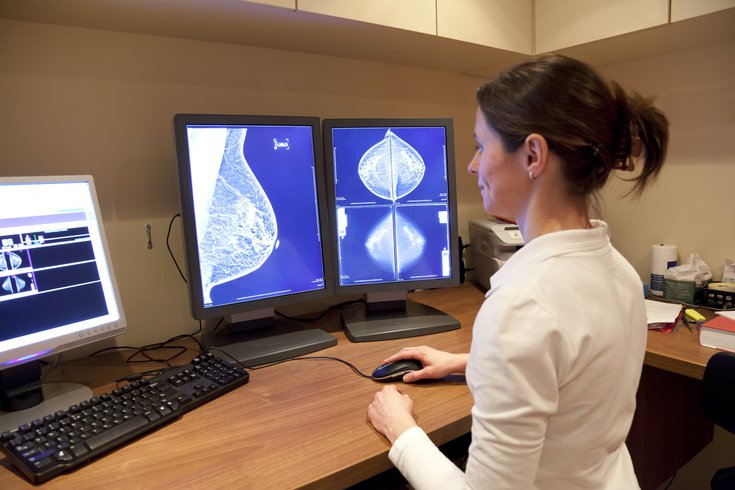
May 08, 2023
 Source/Image licensed from Ingram Image
Source/Image licensed from Ingram Image
Breast cancer screenings should begin at age 40, according to draft recommendations from the U.S. Preventative Services Task Force. That's 10 years earlier than previously advised.
Breast cancer screenings should begin at age 40, a decade earlier than previously advised, the U.S. Preventive Services Task Force now says.
The task force – a group of independent medical experts whose recommendations help guide doctors' decisions – is preparing to update its breast cancer screening guidelines for the first time since 2016. On Tuesday, the task force released a draft of its new recommendations, which will undergo a public comment period before being finalized.
The 2016 recommendations state that women ages 50 to 74 should get mammograms every other year, adding that some women may decide to begin screening before turning 50 after weighing the potential benefits and harms. The new recommendations now also advise women ages 40 to 49 to get screened every other year.
Dr. Wanda Nicholson, vice chair of the U.S. Preventive Services Task Force, told PhillyVoice that there wasn't enough clinical evidence in 2016 to expand the starting age of breast cancer screenings. Now, there is.
"We are in a situation where most breast cancer develops in women 40 and up," Nicholson said. "Since 2015, more and more women between the ages of 40 and 49 are getting breast cancer. There has been a 2% increase in diagnoses each year since 2015."
There still isn't enough evidence to recommend screenings to start even earlier despite some high-risk groups being more likely to die of breast cancer by age 40.
"Women considered high risk should have a one-on-one conversation with their trusted physician about whether or not they would benefit from earlier screening," she said.
The task force focuses on preventive care so their recommendations are for women who do not have symptoms and are at average risk, Nicholson said. The task force also concluded that there isn't enough evidence to evaluate the risks and benefits of mammograms for women 75 and older.
The task force concluded that digital mammograms and digital breast tomosynthesis, more frequently referred to as 3D mammography, are both effective at detecting tumors. The task force said 3D mammograms should be accompanied by traditional digital mammograms or synthetic digital mammography, a two-dimensional image constructed from 3D data.
Most studies that have compared mammogram types have found there is no statistically significant difference in their abilities to detect breast cancer or identify tumor characteristics, the task force said.
"We have known for years that mammograms save lives," Nicholson said. "This recommendation is important for all women. We can save 20% more lives and that is so important."
She added that breast cancer screening only saves lives if other health care steps are also taken, including biopsy, diagnosis and treatment.
Almost 50% of women have dense breasts. The extra tissue can make it harder to accurately detect cancer cells, but Nicholson said there isn't enough evidence to suggest a need for supplemental ultrasounds or MRIs for these women. However, she advised women with dense breasts to have conversations about this possibility with their doctors.
Some research has shown that having dense breasts increases the likelihood of developing breast cancer. Women with extremely dense breasts have up to four times the risk of breast cancer than those with the lowest breast densities. That's higher than the risk associated with a family history of breast cancer, which doubles the likelihood.
Despite this, many women aren't aware that breast density is a risk factor for breast cancer, a recent survey found.
Black women are more likely to be diagnosed with breast cancer at an advanced stage than other racial and ethnic groups and are more likely to develop the more aggressive triple-negative cancer than white women. Black women also are about 40% more likely to die from breast cancer than white women despite having a slightly lower incidence rate.
Nicholson said these disparities make screening critically important for Black women in their 40s. A recent analysis conducted found that Black women in their 40s die of breast cancer at a rate of 27 deaths per 100,000 person-years, nearly double the rate of white women (14 per 100,000).
Nicholson stressed that persisting racial inequities in health care also need to be addressed to ensure Black women receive proper care from breast cancer screening to diagnosis to treatment to the survival pathway.
Nicholson said the task force is calling for more research into the following areas:
• Benefits and harms of screening for breast cancer in women age 75 years and older
• Understanding and evaluating a finding of dense breast tissue on a mammogram
• Understanding and addressing the higher breast cancer death rate among Black women
• Understanding why Black women are more likely to be diagnosed with breast cancers that carry greater risk for poor health outcomes
• Understanding health disparities experienced by Hispanic, Latina, Asian, Pacific Islander, Native American and Alaska Native women.